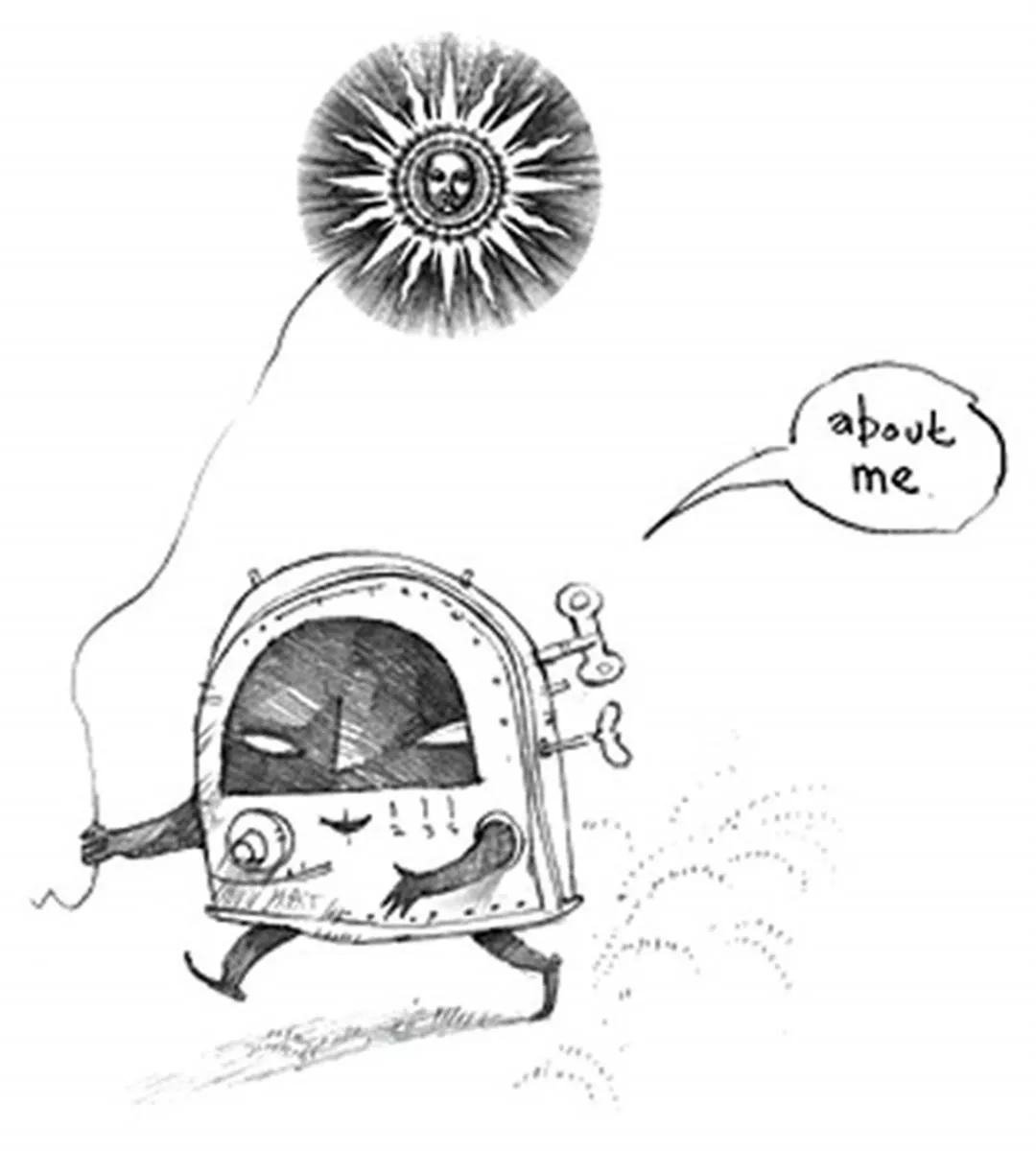Learning from science fiction
The Rabbits portrays invading creatures dressed in red and black army uniforms and helmets and waving flags and swords, coming in from the sea in a gigantic surrealistic yellow ship. They build factories pouring out black smoke, and huge apartment buildings. The straight roads, telegraph poles and rows of machines march in lines towards the innermost land. At the end of the book, a rabbit and a native marsupial--symbolizing Australia's Aboriginal people--are pictured facing each other against a background of a starry night sky.
Shaun Tan, a short slim figure wearing sunglasses and a shy childlike expression, appears at a press conference in Taiwan. He tells the audience that after he received the manuscript of The Rabbits from the publisher, he started to create his illustrations without talking to the writer. After nine months, he completed the work in a simply structured form within which was contained the author's complex political metaphor. After media exposure, the book's somewhat disturbing illustrations and content generated a major controversy in Australian children's literature. Many people questioned whether it was too serious a topic for children. But the publicity actually worked in the book's favor, eventually attracting a great deal of attention from both teenage and adult readers.
Shaun Tan has had an interest in drawing since childhood. He was deeply influenced by the books Animal Farm and Gulliver's Travels by English writers George Orwell and Jonathan Swift, and by the American movie Star Wars and TV series The Twilight Zone. When he was drawing, ideas from these and other stories often came to him out of the blue. He recreated the spaceships, robots and strange alien creatures of the Star Wars movies, copying each of them line by line. With influences like these, it's not surprising that his style has a strongly surrealistic flavor.
Tan also tried his hand at creative writing. When only in his teens, he wrote and submitted for publication a long fictional work illustrated with his own drawings. The publishers, however, were only interested in the artwork, which led him to think that maybe it was better to concentrate on this facet of his creative talent. By age 20, he had become a regular contributor of illustrations to science-fiction magazines and thrillers.
Tan was very good at physics and chemistry in high school, so in the beginning he thought he would probably one day become a scientist. It was not to be. At about age 22, he published his first illustrated book, thereby stimulating his interest in creative art, something that has not diminished. He changed his university major to arts, and in the ten years since has been engaged in professional illustration work, completing five books.

Australian-Chinese illustrator Shaun Tan started his creative work when he was a student. After receiving a number of awards, he began making his mark as a professional illustrator. He looks shy and not at all outgoing, and his dark, metaphorical style of art often probes the melancholy and conflict of the adult world.